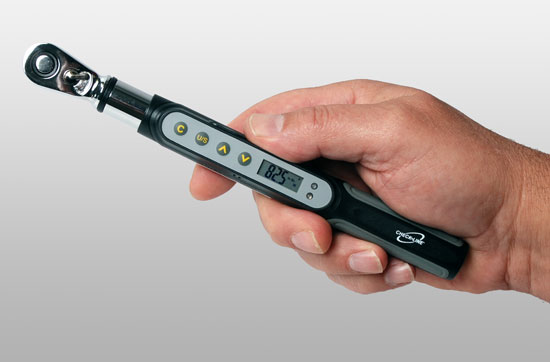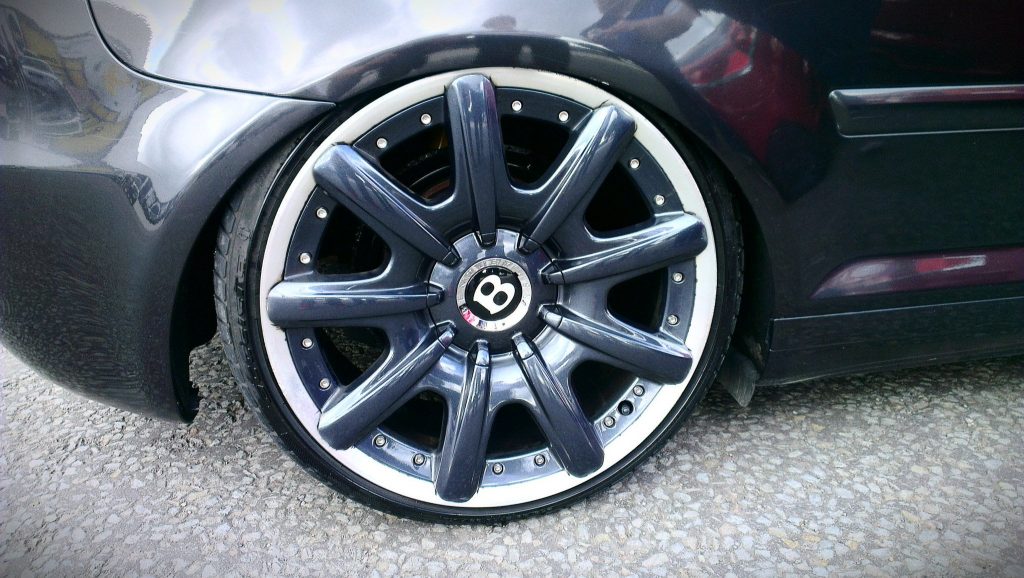Why Everyone Needs a Torque Wrench
If you’ve ever wondered whether you are tightening bolts too much or not enough, you are already on your way to understanding the need for a torque wrench.
A torque wrench won’t help you get any of your DIY jobs done faster. It’s not that kind of tool. Instead, a torque wrench is one of those tools that ensures you do it right.
That’s why every DIYer needs a good torque wrench. Here’s what you need to know.

(source: supercheapauto.com)
How Bolts Hold Things Together
Bolted joints appear deceptively simple: they squeeze two parts together so they don’t move. The squeeze is maintained because the threaded portion of a bolt stretches when you tighten it. Yes, a tightened bolt acts like a spring that pulls the two parts together. It’s weird to think that steel can behave like a spring, but it does, and it’s why bolted joints stay together.
Take a rubber band and pull the ends. If it returns to its original shape when you let go, it means you stretched it within its “elastic” range. If you pull the ends harder and then release before it breaks, you might notice that the rubber band is now longer than it was when you started. That extra length is permanent, and it means the material was stretched beyond its elastic range and into its “plastic” range.
The steel used in bolts behaves the same way. If you stretch a bolt a little, it bounces back afterwards. If you stretch it a lot, well, it won’t. Most bolted joints in a car rely on elastic stretch, which means the bolt can be reused, but there are some (like cylinder head bolts) that are meant to be stretched into their plastic range. We’ll focus only on bolts used in their elastic range here.
What Does Bolt Stretch Have To Do With A Torque Wrench?
That effort you exert when tightening a bolt is proportional to the amount of torque you’re applying to it. And the amount of torque applied is a direct reflection of the amount of stretch in the bolt. It’s hard to directly measure how much you’re stretching a bolt, but it’s pretty easy to measure how much torque you’re applying to it. See where this is going?
A torque wrench simply ensures that a bolt is stretched a certain amount. Tighten a bolt too little and it will loosen and disaster is assured. As a result, most people err on the side of “too much” when tightening without a torque wrench. But tighten a bolt too much and it or the parts being bolted can be damaged and disaster is assured.
The “right amount” of stretch or torque for a given bolted joint on your car depends on many, many factors that, fortunately, you don’t have to think about because the automaker already did.
Get a Service Manual for Your Car
The service manual for your car will show a bunch of numbers next to each bolted assembly. Those numbers are the torque specification, or the amount of torque you need to apply when you tighten those bolts.
Take lug nuts, for example. The torque specification for those might read: “75-85 lb-ft”. This means that the right amount of stretch happens when you apply between 75 and 85 lb-ft of torque to each lug nut.
With a torque wrench in hand (probably a click-type; see below), you would simply dial in the midpoint of the range, or 80 lb-ft. Then tighten the lug nuts gradually, going around in a “star” pattern, until the torque wrench goes “click!” for each lug nut. The “click!” means that 80 lb-ft has been achieved. You’re done, and you can take comfort in knowing the lug nuts are tightened correctly.
Types of Torque Wrenches
There are several styles of torque wrenches, each with pros and cons, available in several ranges.
Click-type torque wrenches, like in the example above, are by far the most common type in a typical automotive shop. These come in a few varieties. Split-beam torque wrenches are robust and generally don’t need to be re-set after each use. Micrometer torque wrenches are a bit more accurate, but they have a spring inside that requires the device be warmed up before use and it must be set to its lowest torque setting after each use. Expect to pay about $250-300 for a high-quality ½” drive unit.
Digital or electronic torque wrenches will display a live torque reading, and will sound a tone, display lights and/or vibrate when the target torque is achieved. They often can be switched from torque to angle mode (for “torque-to-yield” bolts), too. This type needs batteries, of course, and quality ones cost upwards of $500.
 (source: checkline.com)
(source: checkline.com)
Dial-type torque wrenches have no feedback, instead requiring the user to watch the needle sweep the face of a dial while torquing. This can be tricky in certain situations, but the plus side is that they are typically very accurate devices. These are often used as quality control devices. Unlike other types, these can be used with extension bars, if needed. A decent one is about $300.
Shop Smart
Regardless of the type, a torque wrench is a precision instrument. Buy from a reputable manufacturer that has a long history making torque wrenches such as Craftsman, Snap-On and DeWalt. Don’t buy the cheapest one you can find. Often, a cheap torque wrench won’t be accurate, or its accuracy will plummet over time. The cheap buyer will end up paying the most in the long run.
You can cover most DIY car work with two torque wrenches: one ⅜” drive to handle the smaller stuff and a ½” drive for higher-torque tasks.
Life in a garage can be tough, so periodic calibration ensures that accuracy is maintained. With proper care, a good torque wrench will last a very long time and will become one of your most treasured tools.


